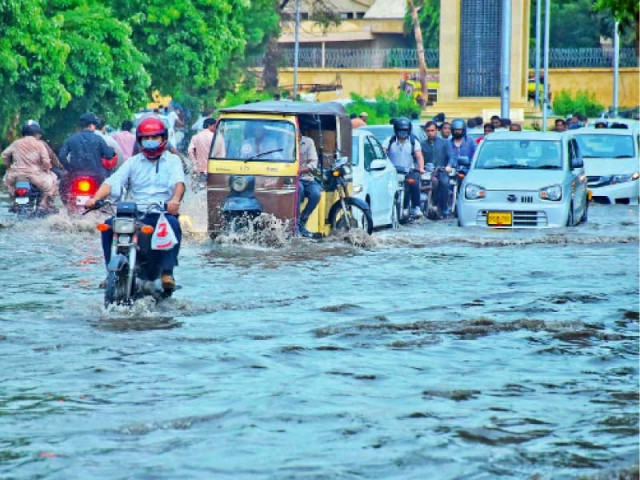'Freak events': Karachi floods hint at shifting monsoon
Altering rains can push more rainfall to financial hub and less to key agricultural regions

Flood-slammed Karachi could face worsening urban inundations in coming years, in part as the South Asian monsoon shifts, climate scientists have warned.
The winds that drive Pakistan's annual monsoon, which arrives from the Bay of Bengal and the Arabian Sea, appear to be altering as a result of climate change, which could push more rainfall to Karachi - and less to key agricultural regions, they said.
"It's new phenomenon and we need to understand it. It hasn't rained like this in Karachi for more than half a century," said Shaukat Ali, a meteorologist and senior scientific officer at the Global Change Impact Studies Centre (GCISC) in Islamabad.
He said winds driving the monsoon from the Bay of Bengal appear to be shifting it northwards, away from its traditional core zone in the agricultural breadbasket of Punjab.
Winds from the Arabian Sea have traditionally been weak but now seem to be strengthening, Ali said.
This year monsoon winds were "extremely erratic", he said, with hotter temperatures in the Arabian Sea leading to monsoon depressions that dumped unexpectedly heavy rainfall on an unprepared Karachi.
"The sea and winds behaved very differently this monsoon," he noted.
Record-breaking heavy rain in Karachi in August killed over 100 people and disrupted the lives of many of the city's more than 15 million residents as water flooded main roads and homes.
The city received its largest-ever-recorded rainfall total in a single day on August 24, when 230 mm (9 inches) of rain fall in just 12 hours, according to the Pakistan Meteorology Department.
Over the month, Karachi received 484 mm (19 inches) of rain, the highest total in at least 90 years, it noted.
Heavier rainfall in Karachi this year was in part the result of a La Nina phenomenon, a regular oscillation in Pacific Ocean surface temperatures that can drive changes in rainfall, said Moetasim Ashfaq, a climate computational scientist at Oak Ridge National Laboratory in the US state of Tennessee.
It was likely the larger driver of this year's shift in rainfall, he said. But as climate change warms oceans, it is also accelerating evaporation of water, which then falls as rain -- one significant additional driver of Karachi's floods, he said.
These extremes could worsen floods, droughts, wildfires and other weather-related threats that already pose a problem in the region, the scientists said.
Special Assistant to Prime Minister on Climate Change Malik Amin Aslam said the reports indicate the "frequency and intensity of climate-triggered freak events is going up in Pakistan".
That was likely to affect not just urban communities but farmers, he said. "The timing of rains is radically shifting without allowing an agriculture adaptation to adjust to the new reality," he said.
In a recent trip to Pakistan's mountainous north, he said, he had seen how the shifting South Asian monsoon was accelerating glacier melt, while Karachi and Sindh province's coast were receiving heavy rains that once fell out at sea.
He said Sindh is one of the most climate-impacted regions of the country, with worsening heatwaves also making life difficult for residents.
To deal with increasing extreme rainfall and glacier melt, he said, the country needed to find ways to capture and store "the huge amounts of water which are becoming available" in order to recharge aquifers and provide water in dry periods.
Ashfaq agreed that more reservoirs and dams were needed to store water and for flood control.
Cities and towns also needed to adapt their infrastructure for extreme rainfall events and move homes away from riverbanks, he said.





1675249047-0/image-(18)1675249047-0-208x130.webp)













COMMENTS
Comments are moderated and generally will be posted if they are on-topic and not abusive.
For more information, please see our Comments FAQ